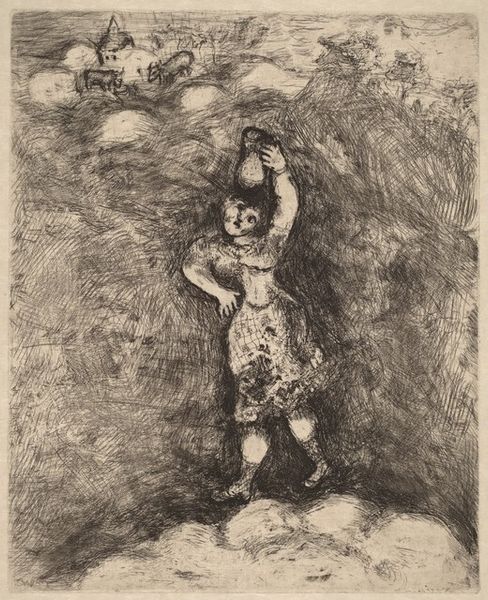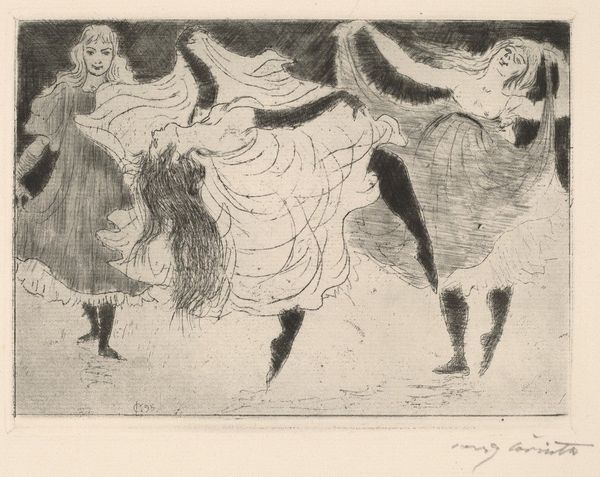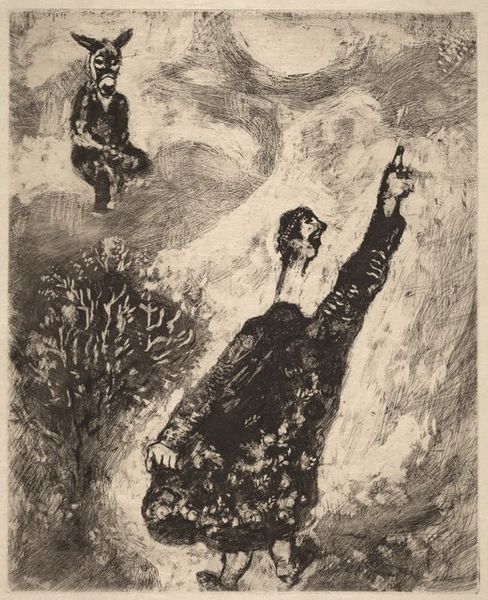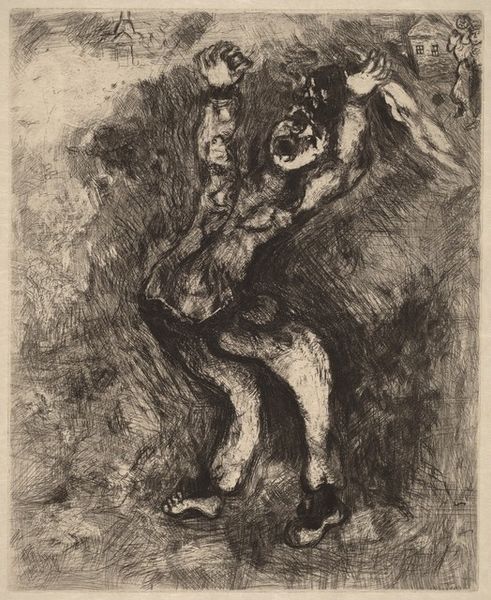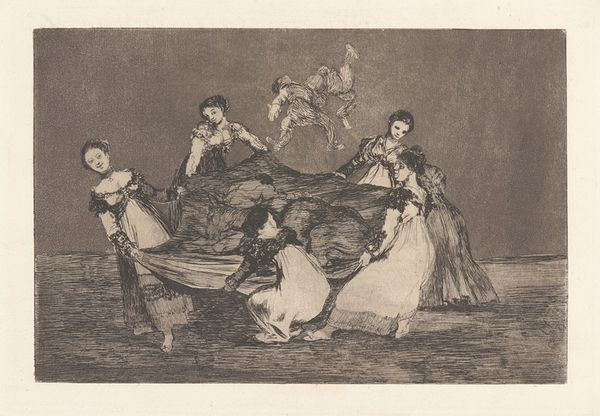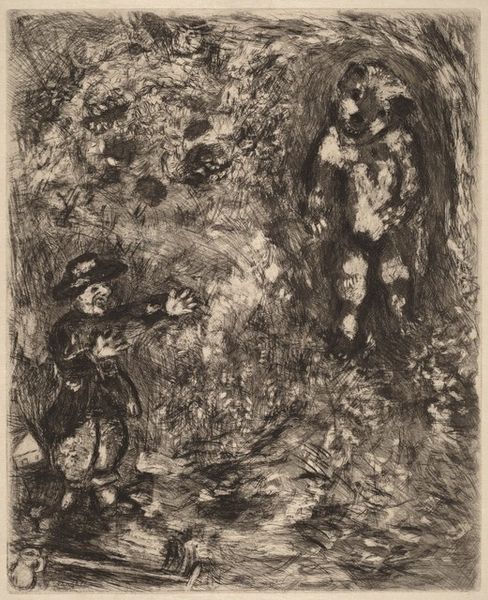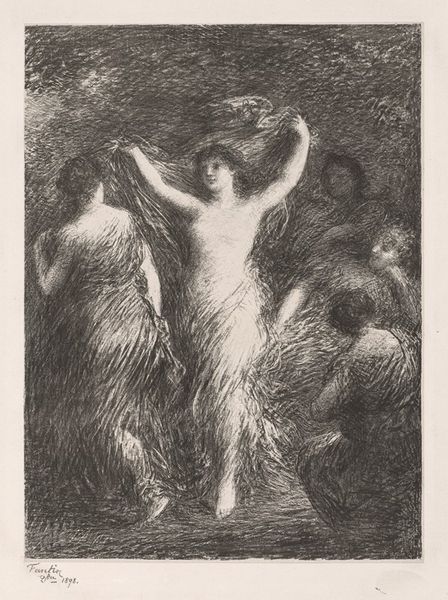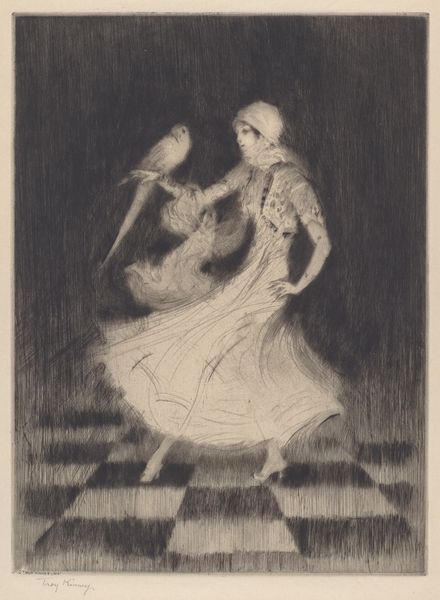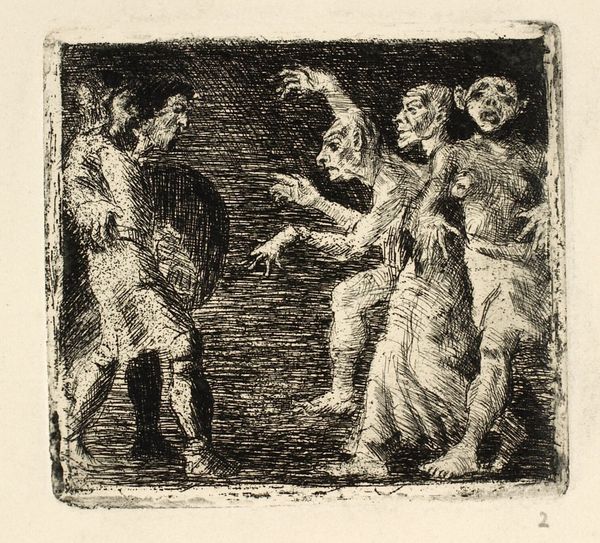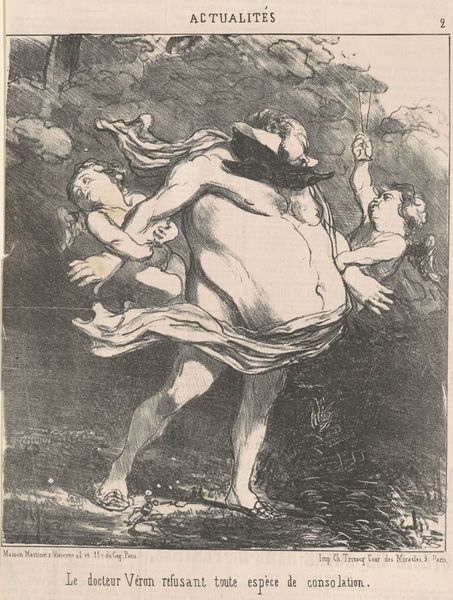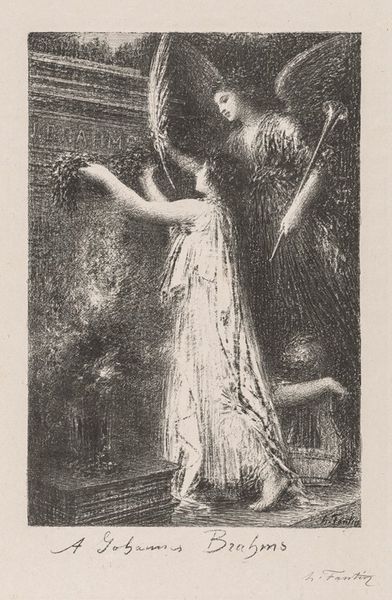
drawing, print, etching, ink
#
drawing
#
narrative-art
# print
#
etching
#
figuration
#
ink
#
pencil drawing
Copyright: National Gallery of Art: CC0 1.0
Curator: Looking at this print by Marc Chagall, dating from between 1927 and 1930, one immediately notices the visible labour inherent in its creation. The artist entitled it "A Will Interpreted by Aesop." Editor: My first impression is that it looks like a frantic dance. The dark, swirling background, the way the figures are caught mid-movement—it evokes a feeling of barely contained chaos. Is it meant to be celebratory, or something more sinister? Curator: Considering Chagall's chosen medium—etching, and likely ink on paper—we must remember the skilled artisanship needed. The quality of the paper itself, the depth of the lines achieved in the etching process...these all reflect an investment of material resources and specialized knowledge. Aesop's fables, after all, often reflect on human labour and morality. Editor: And the imagery is certainly compelling. We have what appears to be three figures, each striking a theatrical pose. The woman in the center, adorned, maybe being judged? To me, the overall symbolism feels ambiguous, open to many different readings based on who’s looking. Is this will truly being "interpreted," or is it being exploited? Curator: Perhaps Chagall means for us to consider the broader market for prints and illustrated books at this time. The labour involved was not just his own creative effort, but also the workshops that facilitated the printing and distribution, and then the consumer base eager to engage with works inspired by classic storytelling traditions. The economic dimensions are crucial. Editor: But what's interesting to me, from a more symbolic standpoint, is how Chagall plays with visual cues of power and vulnerability. That figure pointing—is he a benefactor or a manipulator? How much control do any of them really have over their fates as interpreted through this “will”? Curator: True. It is vital to consider these prints in relation to prevailing economic realities in Paris between the wars and how printmaking allowed for the dissemination of artistic themes to broader audiences. Editor: So while you highlight the social implications of production, I am captivated by how this seemingly simple scene invites introspection on power dynamics and cultural storytelling traditions. I suppose it is in that intersection that the power of this print resides. Curator: Indeed. It certainly shows us how different readings of a single image offer a fuller understanding of its worth.
Comments
No comments
Be the first to comment and join the conversation on the ultimate creative platform.
